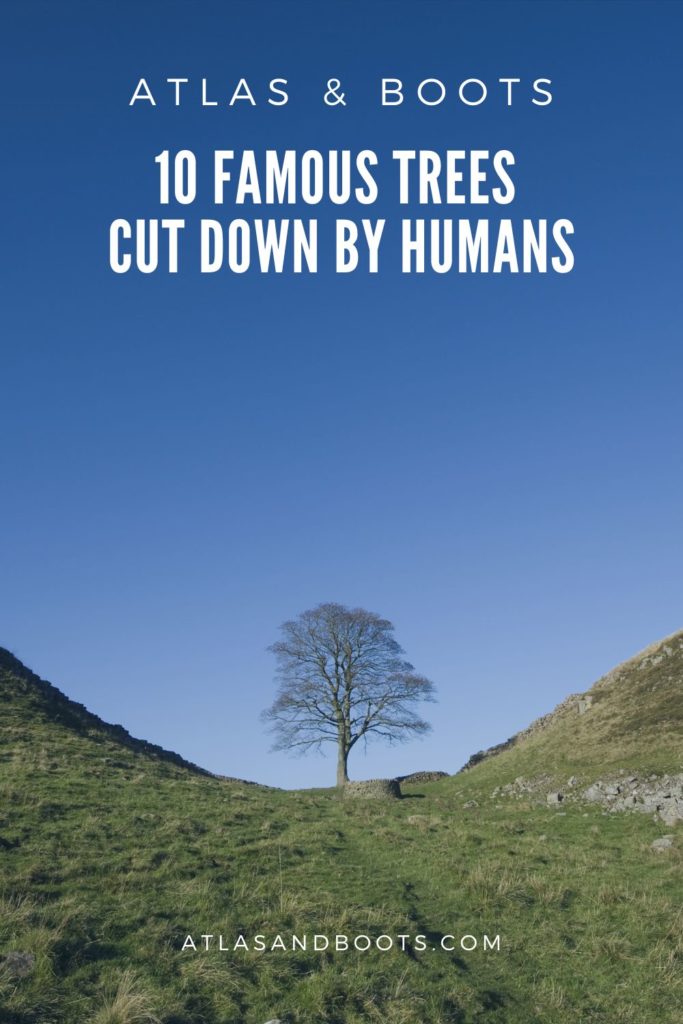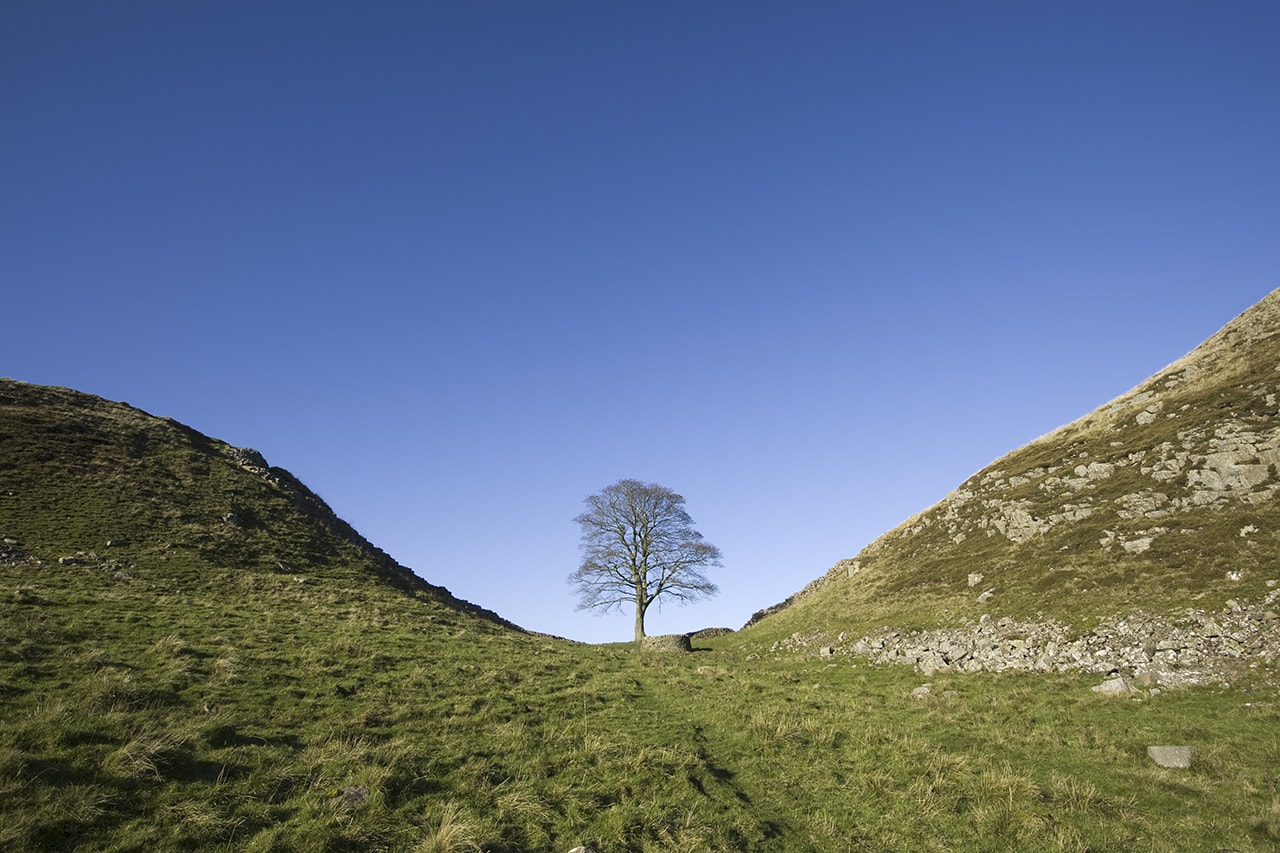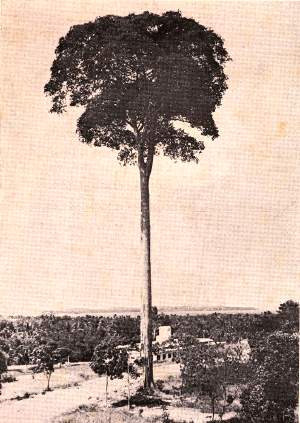Following the felling of the beloved Sycamore Gap tree, we dig into other famous trees cut down by humans
It was an act of vandalism that scandalised a nation. Britain’s iconic Sycamore Gap tree was cut down with a chainsaw in the early hours of 28th September 2023. The senselessness of the act was particularly poignant. There have been other famous trees cut down by humans, but there has usually been a reason: accident, protest, exploitation. In the case of the Sycamore Gap tree, it appears to be sheer malice.
Two men have been charged with criminal damage. One has pleaded not guilty while the other has entered no plea. The outcome remains to be seen.
To mark the passing of this iconic tree, here we dig into other famous trees cut down by humans – including the oldest known to man.
Famous trees cut down by humans
1. Sycamore Gap tree
Famous for: A picturesque setting and its appearance in Robin Hood
Location: UK
Cut down: 2023
The solitary Sycamore Gap tree stood in a dip next to Hadrian’s Wall in Northumberland National Park. It was planted in the late 1800s by previous landowner John Clayton and grew to become one of the most iconic sights of the British countryside.
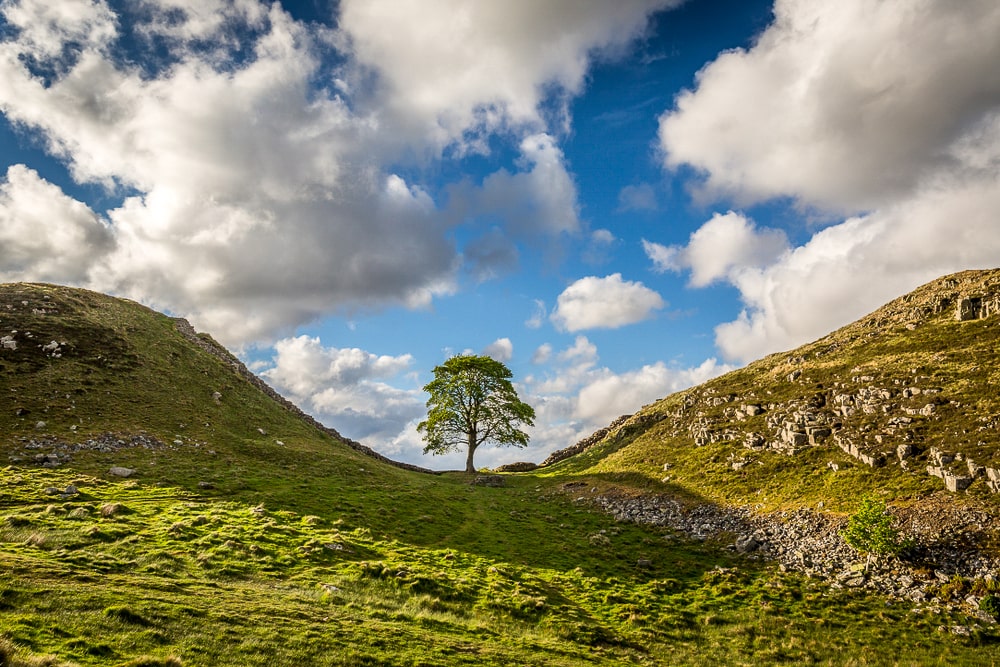
The tree appeared in the 1991 film Robin Hood: Prince of Thieves starring Kevin Costner and was subsequently nicknamed the Robin Hood Tree.
In 2016, it was named English Tree of the Year in the Woodland Trust awards, and of course featured in our own list of the best trees in Britain.
There is a chance that the tree may regrow from the stump, but it will take experts up to three years to determine if this is possible and it could take up to 200 years for the tree to grow back to what it was.
2. The Senator
Famous for: It was the world’s oldest cypress tree
Location: USA
Cut down: 2012
The Senator in Florida’s Big Tree Park was named after State Senator Moses Overstreet who donated the tree and surrounding land to Seminole County for a park in 1927.
The tree was approximately 3,500 years old, making it the world’s oldest cypress tree and one of the oldest overall. Sadly, in 2012, The Senator burned down from the inside out. Firefighters tried to control the blaze, but the tree collapsed.
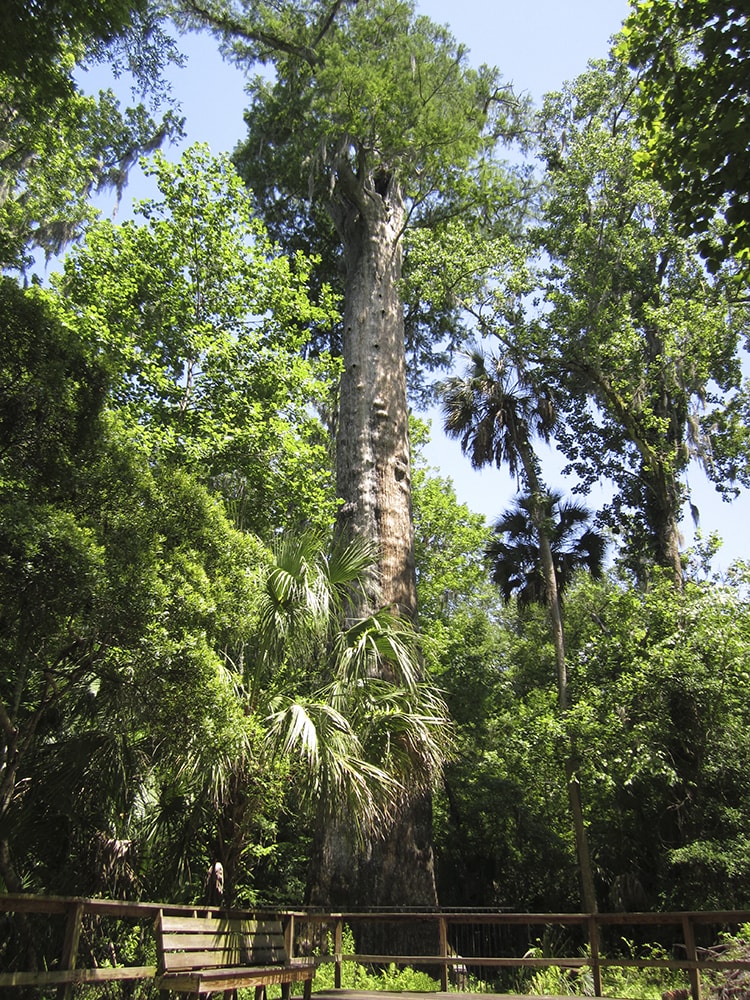
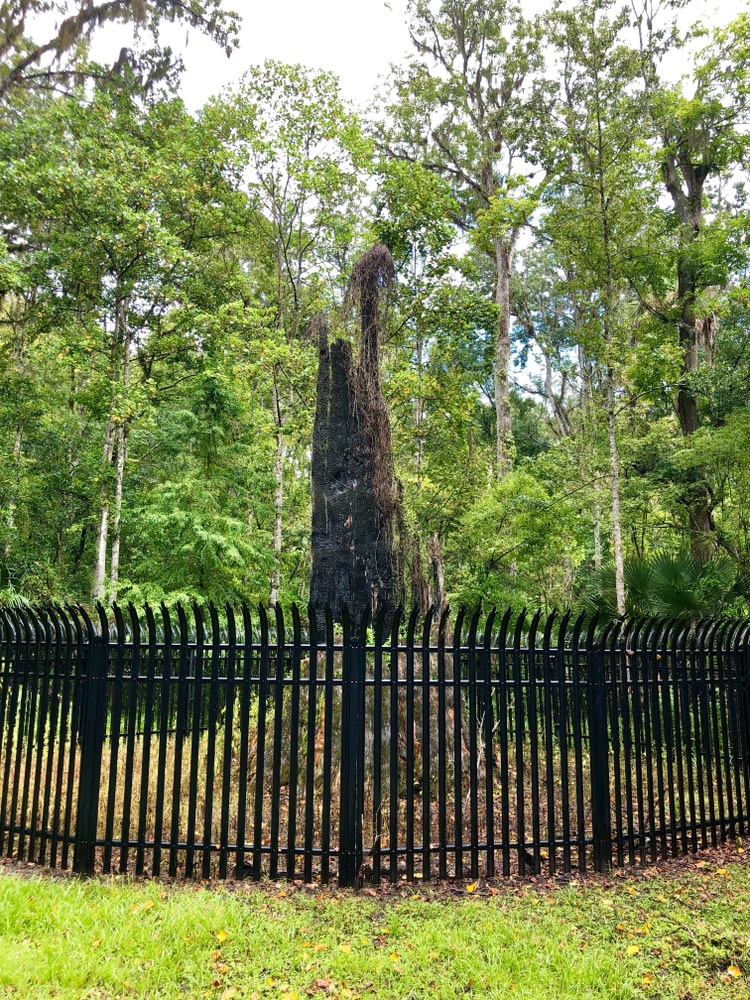
Anthony Scotti/CC BY-SA 3.0; Maily Nguyen/Shutterstock
The Senator pictured in 2011 versus 2019
The Florida Division of Forestry arrested a 26-year-old woman who admitted that she regularly went to the tree when the park was closed. On the night of 16th January 2012, she lit a fire so that she could see the crystal meth she was trying to smoke – but the fire got out of control.
Today, The Senator is just 6-7m (20-25ft) tall. A clone named The Phoenix stands at the entrance to Big Tree Park.
3. Holy Thorn tree
Famous for: It is said to have grown from Joseph of Arimathea’s staff
Location: UK
Cut down: 2010
In a precursor to the Sycamore Gap travesty, the Holy Thorn, a scrubby tree that stood on Wearyall Hill in Glastonbury, was felled by vandals in 2010.
The tree had special significance in Christendom. It is believed that it grew from the staff of Joseph of Arimathea, a Biblical figure who assumed responsibility for the burial of Jesus after his crucifixion.
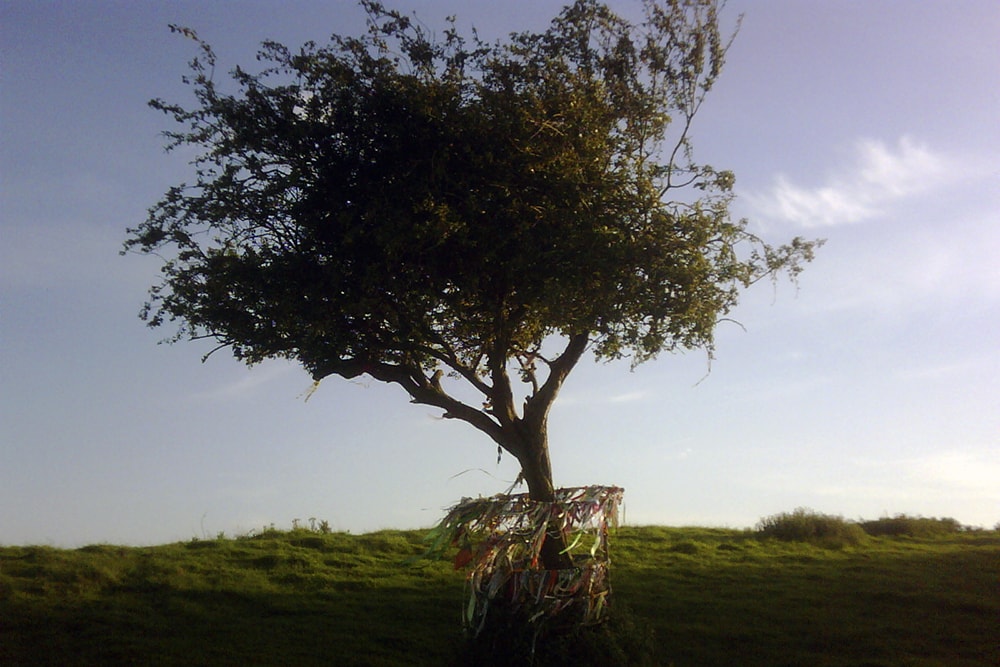
It is said that Joseph thrust his staff into the soil and it miraculously broke into blossom. Miracle or not, the tree was held in special regard by the people of Glastonbury. Indeed, some were left in tears when they looked up to find a bare patch of sky where the tree used to be.
It is thought that the culprits might have been militant Christians who opposed the tree’s use as a pagan symbol, or pagans who opposed its use as a Christian symbol. To this day, they remain unknown.
4. Kiidk’yaas
Famous for: Its rare colouring
Location: Canada
Cut down: 1997
Kiidk’yaas, also known as the Golden Spruce, was a Sitka spruce tree that grew on the banks of the Yakoun River on the Haida Gwaii archipelago in British Columbia, Canada.
Kiidk’yaas, which means “ancient tree” in the Haida language, was notable for a rare genetic mutation which made its needles golden in colour instead of the usual green.
Tragically, Kiidk’yaas was felled in January 1997 by Canadian forest engineer Grant Hadwin as an act of protest against the logging industry.
Hadwin made a series of strategic cuts designed to leave Kiidk’yaas standing but vulnerable to the next strong winds. It fell two days later.
Hadwin fled but sent a fax to the media claiming responsibility for the act. He was arrested and released on bail, but never arrived at his trial. What is believed to be Hadwin’s broken kayak and effects were found on Mary Island in June 1997, but his fate remains unknown.
5. Tree of Ténéré
Famous for: Being the most isolated tree in the world
Location: Niger
Cut down: 1973
The Tree of Ténéré was known as the most isolated tree in the world. It was the last of a grove of acacia trees and lived in the Ténéré region of the Sahara Desert in northeast Niger.
It was so notable that it and only one other tree (the Arbre Perdu or Lost Tree to the north) were the only trees marked on a map at a scale of 1:4,000,000.
Tragically, the tree was knocked down in 1973 by a drunk driver. The dead tree was moved to the Niger National Museum in the capital, Niamey. A metal sculpture stands where the tree used to be.
French musical duo Ibeyi pay tribute to the tree in their video for Transmission/Michaelion.
6. Prometheus tree
Famous for: Being the oldest tree in the world
Location: USA
Cut down: 1964
In 1964, Donald Rusk Currey, a graduate student who worked for the US Forest Service, unwittingly killed the oldest tree known to man.
Prometheus was a Great Basin bristlecone pine growing on Wheeler Peak in eastern Nevada and was at least 4,862 years old when Currey cut it down.
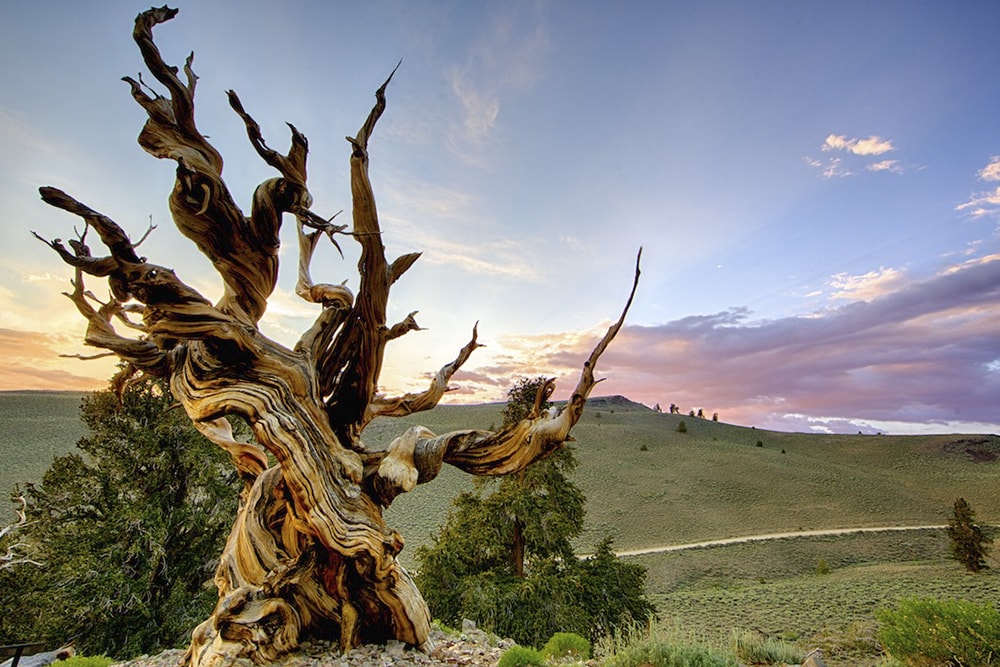
There are conflicting stories as to why Currey cut down the tree. Some reports say that he got his corer stuck in the tree and a park ranger helped him cut down the tree to retrieve it. Others report that Currey wanted a cross section of the tree because tree cores were too small and difficult to read.
It’s only on counting the tree rings that Currey realised he had cut down one of the oldest living organisms known to man.
7. Changi tree
Famous for: Its role in World War II
Location: Singapore
Cut down: 1942
The Changi Tree in Singapore started appearing on maps circa 1888 and served as a major landmark due to its 76m (250ft) height.
In February 1942, however, the Changi tree was felled to prevent the Japanese from using it as a ranging point during World War II. Legend has it that the fall of the Changi tree led to the fall of Singapore itself.
In 2001, the Singapore Tourism Board planted a new “Changi tree” at the Changi Museum.
8. Mark Twain tree
Famous for: Named after the writer
Location: USA
Cut down: 1891
The Mark Twain Tree, named after the American writer, was a giant sequoia in the Big Stump Forest of Kings Canyon National Park in California’s Sierra Nevada mountains.
It had a diameter of 4.9m (16ft) when it was cut down in 1891 for the American Museum of Natural History. It took four men 13 days to cut down the tree, leaving a stump large enough for 50 men to stand on.
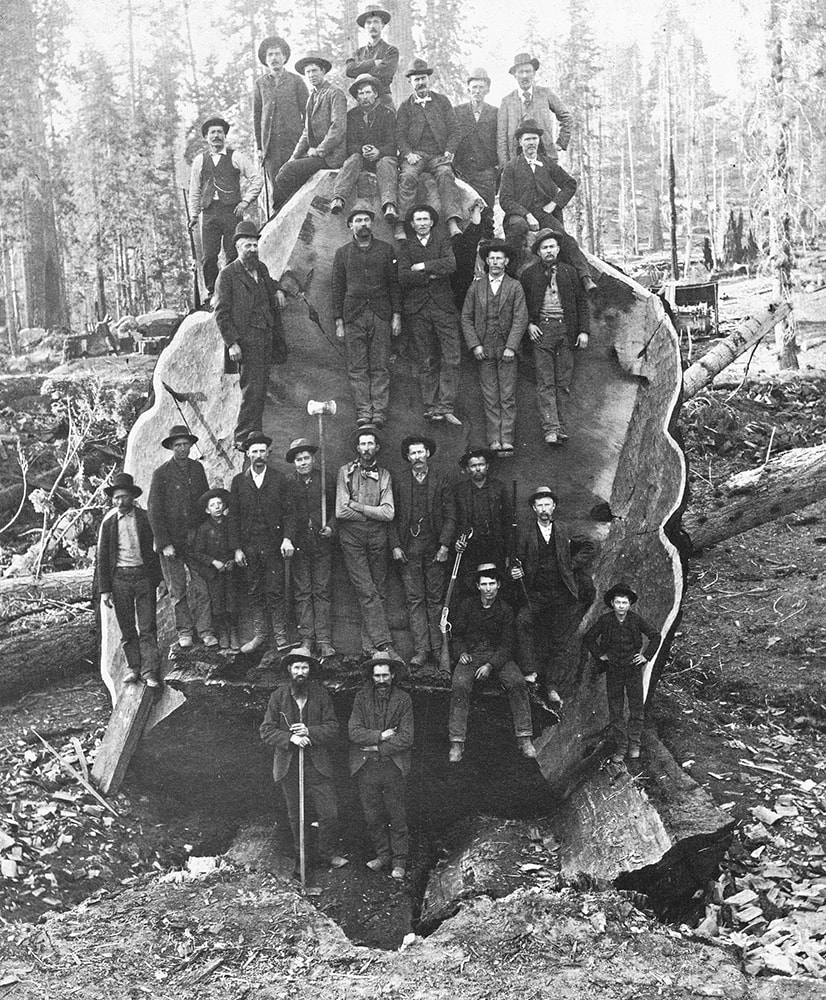
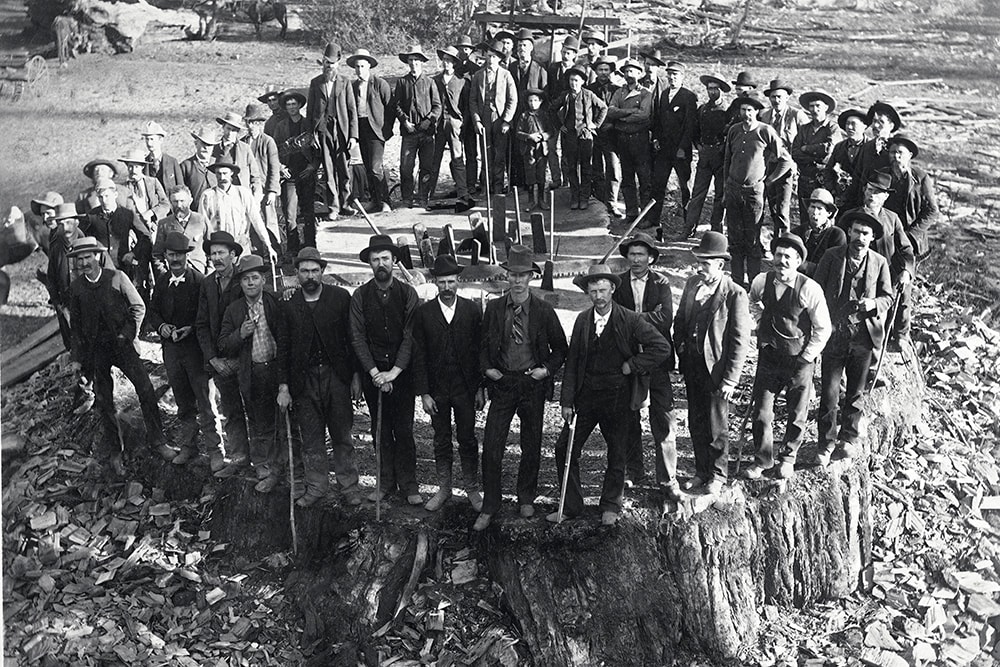
Public Domain
The gigantic Mark Twain tree is one of the most famous trees cut down by humans
The dead tree was shipped to the American Museum of Natural History in New York and the British Museum in London at the expense of Collis P. Huntington, the president of the Southern Pacific Transportation Company. At the time, access to sequoia groves was difficult and the existence of these giant trees was not widely believed, hence the museums’ interest in the tree.
9. Mammoth tree
Famous for: Sparking the conservation movement
Location: USA
Cut down: 1853
The felling of the Mammoth tree is is said to have sparked the conservation movement 170 years.
In June 1853, the giant sequoia was felled by a group of gold-rush speculators in California. It took them three weeks to cut down the 1,244-year-old tree, which was then sent to San Francisco to be put on display.
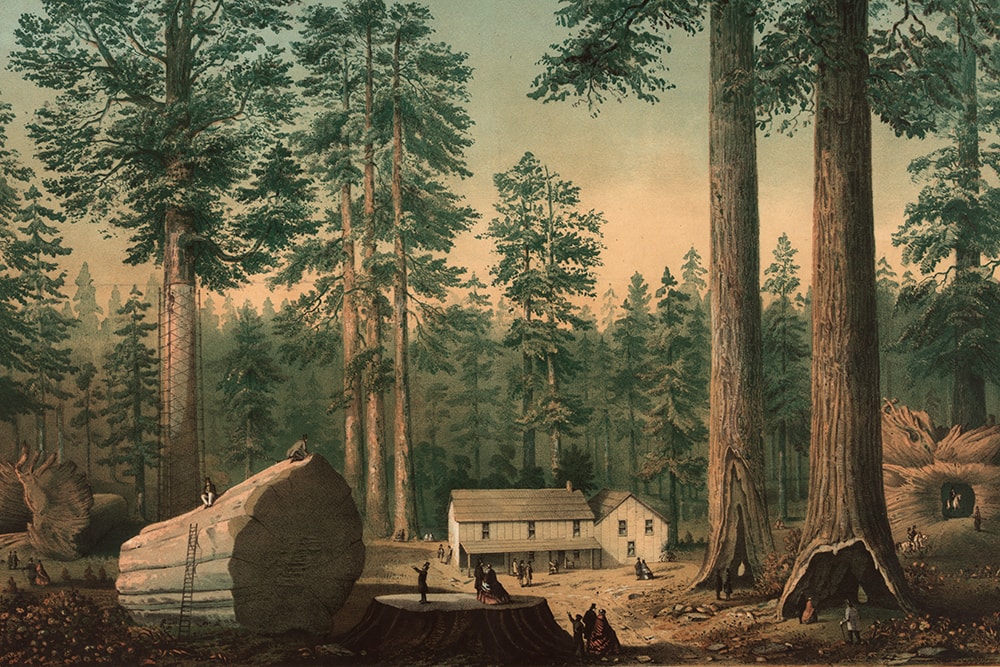
Giant sequoias had only been discovered by white Americans that spring and word quickly spread. Exploitation followed with piano performances and tea dances held on the tree, as well as a bowling alley carved into its prone trunk. The bark from a second felled tree would later be displayed at London’s Crystal Palace to the awe of Victorian England.
A decade later, the doomed trees helped inspire what would eventually become the US national park system.
10. Washington’s Cherry Tree
Famous for: Spawning George Washington’s famous “I cannot tell a lie” line
Location: USA
Cut down: Said to be 1738
The cherry tree is one of the most enduring legends about George Washington. As the story goes, Washington was six years old when he received a hatchet as a gift and promptly used it against his father’s cherry tree.

His father discovered the damage and angrily confronted the future president. Young Washington bravely admitted his crime: “I cannot tell a lie. I did cut it with my hatchet.” Taken aback, his father embraced him, claiming that his honesty was worth more than a thousand trees.
The story was reported by biographer Parson Weems who after Washington’s death interviewed people who knew him as a child over a half-century earlier. No secondary source for the story has been found and it therefore remains apocryphal.
Enjoyed this post? pin it for later…
